|
|
 |
 |
���ԕ��i�ȉ��A���� �`��l�� �u���C���X�g�[�~���O�̂��߂̌����f�ށE�c���^��蔲���j
|
�w���}�h�ɂ����{�Đ���Â���\���ƃv���W�F�N�g�Â���x�@����
�\�\�\�������́A��苭�������Â���ɂ��Ȃ���u���}�h�ɂ����{�Đ���A�o�ύĐ��v�̂��߂̐V��
�@�@�@�@
�����
�N�����A�V�������Ƒ��Â���A���ƃv���W�F�N�g�Â�����ʂ��������ƍl���Ă���B
Inter-Party Policy Proposal Meeting
�gJapan Revitalization Policy -
Development of National Projects�h
We will organize a new multi-party group to discuss a Japan Revitalization Policy, envisage the national vision, and plan national projects.
The group will lead to a stronger government.
|
|
����������o�ύĐ��Â���͑҂����Ȃ��̏�ԁB
���{�S�̂̕����Ɍ����A�������X�s�[�h���K�v�Ƃ���Ă���A�����ɓ������i2012�N10���`�j�̐i�����e�����܂����B
We can waste no time to formulate economic policies with immediate effects.
Speedy action is required to revitalize Japan as a whole. Below is the outline of the progress of the Policy Proposal Meeting (October 2012 onward)
�y���{�o�ϐV���@2013�N3��25���@2�ʁz
��ЂR���Ɏ����ԓ���n�݁@�@ ���E���E�ہ@ ���}�h�Ŏɒ� �@
�����}�A����}�A���{�ېV�̉�̍���c����̒��}�h����́A�����{��k�Ђ̔�ЂR���ɑ�K�͂Ȏ����ԎY�Ƃ̏W�ϒn�����邱�Ƃ𒌂Ƃ������߂��܂Ƃ߂�B�Ő���K���ɘa�ŗD������u�����ԐV�Y�Ɠ���v�̑n�݂����{�W�O�ɒ��A���{�̐����헪�ɐ��荞�ނ悤���߂�B
�@����͐Ό��M�Y�����[���������Ăт����A�����}�̈����Y�A����}�̏����m�A�ېV�̏��엊�v�e���炪����A�˂��B���z�E�̃m�[�x���܂ƌĂ��ăv���c�J�[�܂���܂������z�Ƃ̈ɓ��L�Y����g���^�����Ԃ̊W�҂���Q�悵�Ă���B
�@�\�z�ł�200�w�N�^�[���K�͂̓����݂��A�ł킸�ɗA���ݕ������H�E�ėA�o�ł���ېőq�ɂŎ����ԕ��i��g�ݗ��ĂėA�o�ɐU�������B�@�B�ݔ��̓��ʏ��p��s���Y�擾�łȂǂ̌��Ƃ�F�߂�ق��A�O���l�Z�p�҂̓�����̊ɘa�ȂNJO���l�������₷������������B
�u���{�̍��Ƒ��Â���v�@�����F
Creation of Japan�fs National Vision |
�u���{�̍��ƃv���W�F�N�g�v�����F
National Projects in Japan |
�V���f�ڋL��
Media Release |
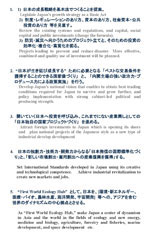 |
|
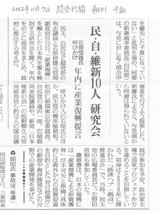 |
|
|
�@��������2011�N3��11���ɔ������������{��k�Ђ̒���ɁA���}�h�ɂ�镜���̂��߂ً̋}������������B
�@��������́A����������_�W�H��k�Ў��ɒ������蓾�Ȃ������o�ϓ���̖@�����Ɍ������A��Вn�ւ̕������搧�x�A�S���ł̑������搧�x �������A������s�ւƌ����킹�邱�Ƃ��ł����B
�@�u���}�h������i�v�R��j�v�����ꂽ���e�́A�u����4����v�i�G�R�V�e�B+�����ԐV�Y�Ɠ��摼�j���܂߁A����܂łɎ��������s���Ă��������Q�̒��ł��A���ɋ������_�̎x���������Ă���B
�@���x�̕����v���ʂ��A�u�s�������v�Ɓu�Y�ƕ����v�͈قȂ�A�^�̕����ɂ� �g�Y�ƕ����ɂ�錴���̊l���h ���K�v�ƂȂ邱�Ƃ��A�������̓X�^�f�B�����B
�@����������o�ύĐ��Â���́A�҂����Ȃ��̏�ԁB
��Вn�������܂߁A���{�S�̂̕���������قǂ܂łɕK�v�Ƃ��ꂽ���Ƃ͂Ȃ��B
�@�g���{���������ѐ������Ă����h ���߂ɂ́A
1) ���̊����V�X�e����ς��āiChange the Formula�j�A�����J�����ƁB
2) �Y�ƕ����̂��߂́w���{�Ǝ��̍��ƃv���W�F�N�g�Â���x ���s�����ƁB
3)�@���̂��߂ɁA���������A�Љ�{���A�����鐧�x�A���{�����������ƁB�@
���K�v�ƂȂ�B
�̂Ɏ������́A���}�h�ɂ����{�Đ���Â���A���ƃv���W�F�N�g�Â���ւ̐������s�����ƂƂ����B |
Immediately after the Great East Japan Earthquake on March 11, 2011, we held an emergency meeting of MPs of different parties to consider post-earthquake rehabilitation.
The Rehabilitation meeting successfully led the proposals for establishing the Rehabilitation Special Zones in the earthquake stricken area and General Special Zones across the country to implementation. We proposed the legislation of Economic Special Zones after the Great Hanshin Awaji Earthquake, but it was not implemented.
Among other policy proposals by us, the proposals including the Four Rehabilitation Special Zones (Eco-City + Automobile-related New Industries, and others) by the Inter-party Rehabilitation Meeting are specially supported by the public.
We have learned, through our several rehabilitation plans, that �gadministrative rehabilitation�h and �gindustrial rehabilitation�h are different, and that �gobtaining funds through industrial rehabilitation�h is required for rehabilitation in its true sense.
We can waste no time to formulate economic policies with immediate effects.
There was no time in our history when the revitalization of Japan as a whole including the rehabilitation of the earthquake affected area is urgently needed like today.
In order for �gJapan to survive and grow,�h we need:
1) To change the formula, and open the doors of Japan to other countries,
2) To develop Japan�fs specific National Projects to revitalize industries, and
3) To review public investments, social capitals and all other systems and capitals.
We organized an inter-party meeting to develop policies to revitalize Japan and develop national projects.
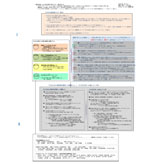 |
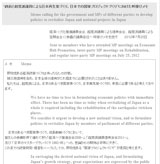 |
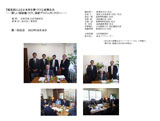 |
���Ƒ��ƍ��ƃv���W�F�N�g�ւ�
�\������
Structure of the national vision
and national projects |
�{�����ւ̌Ċ|����
Document inviting participation
in the meeting |
��L�^�ʐ^
Photo of meeting |
|
�y�ǔ��V���@2012�N10��7�������z
���E���E�ېV�̂P�O�l���V������u���{�Đ��v�@�N���ɎY�ƕ�����
�@����A�����Ȃǒ��}�h�̗L�u�c���ƐΌ��M�Y�����[���������P�O���A�u�Y�ƕ����v�����Ƃ������{�Đ�����������錤������J���B�N�����߂ǂɒ��܂Ƃ߁A���{�ɒ�o����l�����B
�@
�Ăт����l�̐Ό����̂ق��A����}�̒M���������A�����m�O���ƌ����ψ����A�����}�̈����Y�A�≮�B���O�@�c����A�V�}�u���{�ېV�̉�v�̏��엊�v�����[���������P�O�l�̍���c�����Q����\��A�����Ǝ哱�ō��ƃv���W�F�N�g����i�߂邱�Ƃ�ڎw���Ă���B
�O�g�͂Q�O�O�W�N�ɊJ���ꂽ�u�o�σn�u�i���_�j���i��v�ŁA�����A����}�̍L��ψ�����������c���Q�����Ă����B
�@
��ӏ��́A���{�̐^�̕����ɂ́u�Y�ƕ����ɂ�錴���̊l���v���s�����Ǝw�E�B
��̓I�ɂ́A�C�O����̓������i��ړI�Ƃ����u�Γ��������v�̑n�݂�A�C�m�J���A�V�G�l���M�[�Ȃǂ̕���ł̎Y�ƊJ�����������B
�yYomiuri Shimbun, October 7, 2012�z
New Study Group for �gJapan Revitalization Policy�h by ten MPs of the Democratic, Liberal Democratic and Restoration Parties
--------- Conveyed by Nobuo Ishihara, it intends to submit a Proposal to the government within this year.
Nobuo Ishihara, former deputy chief cabinet secretary and MPs of different parties will hold on October 10 a study meeting to discuss measures to revitalize Japan centering on �gIndustrial Rehabilitation.�h
In addition to Mr. Nobuo Ishihara, around ten MPs will take part in the meeting. They include Minister Shinji Tarutoko of Internal Affairs and Communications, Jin Matsubara, former National Public Safety Commissioner, Ichiro Aisawa, LDP, House of Rep, Takeshi Iwaya, LDP, House of Rep., Yorihisa Matsuno, former vice cabinet secretary, now a member of the Japan Restoration Party. They intend to develop national projects led by politicians.
The predecessor of this group is the meeting on Economic Hub Development formed in 2008 in which Prime Minister Noda was a member in his capacity of chairman of Information and Public Relations Committee of the Democratic Party.
The prospectus of the group indicates that obtaining funds by rehabilitating industries is indispensable for the true revitalization of Japan. In concrete, it lists the establishment of �gInvest in Japan Agency,�h and industrial development in marine development and new energy sources.
|
��L�^
�w���}�h�ɂ����{�Đ���A�o�ύĐ��Â��� �\ ���ƃv���W�F�N�g�Â���x����
----���}�h��������A�e�[�}����{�S�̂֊g���Ă̐���----
���� �u���C���X�g�[�~���O�@�@����24�N10��10���i���j�@12���`13��30��
Inter-Party Policy Proposal Meeting
�gJapan Revitalization Policy -
Development of National Projects�h
- Policy proposal meeting succeeding the Rehabilitation meeting to expand the subject from post-earthquake rehabilitation to the revitalization of Japan as a whole -
The 1st Brainstorming October 10, Wed., 2012 12:00 -13:30
|
�ږ�F�Ό��M�Y �����[�������@�@�@�@�����F�@��@�_��
�����Y�c�� �@ �@�M���L��c���@�@�@ �≮ �B�c���@�@ �@�}�@�_�j�c��
�����@�m�c�� �@ �@ �É�ꐬ�c���@�@�@ ���엊�v�c��
�Ό��M�Y �����[�������@�@�@�@�@�@�@�@�@��؍_��@�����v���f���[�T�[ |
Advisor: Nobuo Ishihara, former deputy chief cabinet secretary
Secretary: Koji Suzuki
Ichiro Aisawa, LDP, �@�@Shinji Tarutoko, JDP, �@�@Takeshi Iwaya, LDP,
Hirofumi Ryu, JDP, �@�@Jin Matsubara, JDP,�@�@ Issei Koga, JDP,
Yorihisa Matsuno, Japan Restoration Party,�@�@
Nobuo Ishihara, former deputy chief cabinet secretary,�@
Koji Suzuki, Project Producer
|
 |
���_�F�@���{�Đ���A�o�ύĐ��Ƃ��Ă̍��ƃv���W�F�N�g�Â���
General Theme: Developing National Projects as a Japan Revitalization Policy
|
|
�o�ύĐ���Ƃ��āA���ƃv���W�F�N�g�Â����D���Ƃ������B
��Вn�����͌o�ϕ����i�s�������ł͂Ȃ��j��K�v�Ƃ���i�K�ɓ����Ă���A���{�S�̂̕�������Вn�����ɂ��Ȃ���ƍl���邩��ł���B
�������́A
1) ��x�̑�k�Ёi��_�W�H��k�ЁA�����{��k�Ёj�ɑ��镜���v��A����Â�����s�����B
2) ���݂̍Đ��Ɍ������u���{�̃}�X�^�[�v�����Â���@1992-95�v ���s�����B
3) ���{�̐����헪����{�@�ł��邱�Ƃւ́u�o�σn�u����v�Â�����s�����B
�������A���{�Đ���A�o�ύĐ��ւ̍��Ƒ��Â���A���ƃv���W�F�N�g�Â�����l�������B
����܂ł̌�������A
�����������l�邽�߂ɁA�C�O���{�E�D�ǂȓ����@�ւƂ̋������ɂ��A���{�ł̍��ƃv���W�F�N�g�Â��肪�헪�̈�Ƃ��Ă��邱�Ƃ�F�����Ă���B
We consider the development of national projects as a priority policy to revitalize Japan.
It is because the rehabilitation of the earthquake affected area has entered the stage when economic rehabilitation is required, and we consider that the revitalization of Japan will promote post-earthquake rehabilitation efforts.
We hope to develop the vision of Japan and national projects as means to revitalize the nation based on our past experiences such as listed below:
1) Prepared the Rehabilitation Plans after two great earthquakes (Hanshin Awaji and East Japan), and proposed policy ideas to the government.
2) Developed the �gMaster Plan for Japan 1992-95�h with an intention to revitalize Japan.
3) Prepared the �gEconomic Hub Policy�h to legislate the Japan�fs growth strategy as a Basic Act.
As a result of our study meetings, we believe that the development of national projects in Japan to be jointly implemented with foreign governments and excellent investment institutions is a feasible strategy to obtain funds for the revitalization of Japan.
|
 |
�u���{�̍��ƃv���W�F�N�g�v�@�����F
�gNational Projects in Japan�h
|
���ƃv���W�F�N�g�Â���Ƃ��āA���L�̃v���W�F�N�g���Ă������B
We propose the following projects as national projects.
[100���~�s��n�o�A300���l�ٗp�n�o] �ւ̃R�A�E�v���W�F�N�g�Ƃ��āA
���t�哱�̋��������́E�v���f���[�X�͂ɂ�鐭����{���s���B
Core project for
Creating a 100 trillion yen market and 3,000,000 employment opportunities in five years
Policy implementation by Cabinet initiative, strong political leadership and producing capacity
���{�̌o�ύĐ��ւ́\�\�\
4.�u�o�σn�u�헪�v�̎��{
�@���m�^�A�A�����A�ʐM�A�ό��A�T�[�r�X�A�����A���Z�A�s���Y�A���Ɓn���ւ̔g�y
�@�{���{���́u���ەW�����Â���v�A�u���_�Â���v���A�o�ρE�r�W�l�X�n�u�Ƃ��Ă̎Y�ƕ�����
�@40���~�s��n�o�A100���l�ٗp�n�o]�@��
1) �gFirst World Ecology Hub�h �J���ւ̎Y�Ɖ����_�i�������Ǝ{�݁j
�@�@�@��F�V���K�|�[��Suntec City
2) �V�����T�[�r�X�o�ςւ̃t�B�i���V�����E�Z���^�[
�@�@�@-----�g���E�Œʗp����W�������A���{�̗͂Łh�B
3) �G���^�[�v���C�Y���x�����ɂ��V�Y�Ƒn�o
�@�@�@[�����O�̐����E�����E�T�[�r�X�A������ƁA�N�Ɖ�] �x���B
4. Implementation of the Economic Hub Strategy
�� Spreading effects onto transportation, logistics, communications, tourism, services, retailing, financing, real estate, construction companies, etc
From Japan�fs standardization to world standardization
To reactivate industries in Japan as an economic and business hub
by setting international standards and developing industrial and business bases
Creating a 40 trillion yen market and 1 million employment opportunities
1) Development of �gFirst World Ecology Hub,�h bases for industrialization
(complex business facilities) �@�@ex: Suntec City of Singapore
2) Financial Center for new service economy
- Standardization for the world by Japanese capabilities
3) Creating new industries by introducing the enterprise system
-To support manufacturing, retailing and service industries and medium and small size enterprises and entrepreneurs both in Japan and abroad
���{�̌o�ύĐ��ւ́\�\�\
5. �gFirst World Ecology Hub�h �Ƃ��Ă̎Y�ƊJ��
[20���~�s��n�o�A50���l�ٗp�n�o]�@��
1�j��ÁE�o�C�I�^�_�ѐ��Y�A 2�j���Z�p�A3�j�V�G�l���M�[�J���i�����ɑ��鎟����Y�Ɓj�A
4�j�h�ЁE���Ђւ̃C���t���^�\�t�g�J���A5�j�F���J���A�@6�j�C�m�J���i�V�G�l���M�[�A�C�m�q�ꑼ�j�A�@
7�j�ό��@ 8�j����@9�j���Z�Z���^�[�@10�j�R���e���c�Y�� �@��
5. Industrial development specified as the �gFirst World Ecology Hub�h
Creating a 20 trillion yen market and 500,000 employment opportunities
1) Medical and biological businesses/Agriculture, Forestry and Fisheries
2) Environmental technologies �@�@
3) New energy development replacing nuclear power generation
4) Infrastructure to prevent or reduce disaster, and software development
5) Space development 6) Marine development (new energy, marine farm, etc.)
7) Tourism 8) Education�@�@9) Financial center
10) Contents industries, and others
|
 |
�u���{�̍��Ƒ��Â���v�@�����F
Creation of Japan�fs National Vision
|
���Ƒ��Â���Ƃ��āA�ȉ��̒�Ă��s�������B
We propose the following:
1. ���{�̂����鐧�x�Ǝ��{�̌��������A
1) ���{�̐����헪����{�@�ł��邱�Ƃ��āB
�@�u�o�σn�u�������Ƃ�������N�Ɠ����g��A�ٗp�n�o���l�����邽�߂̖@�ĉ��ƁA
�@
���̐��ʁE���ʂ邽�߂ɐɂ��܂Ȃ��A�����銈�����s���B�v
2) ���x�E���M�����[�V�����̂�����i�����@�\�A�Ȓ��āX�ҁA�s�����s�A�O�ז@�A�ʋƖ@ ���j�A
�@
���{�̂�����A�Љ�{�E���������̂���� �����������B�@�ichange the formula�j
3) �h�ЁE���Ђ��������߂̃v���W�F�N�g���ĂƁA���̂��߂̓����̌������E�������E��������}��B
1. By reviewing the existing systems and capital,
1) Legislate Japan�fs growth strategy as a Basic Act
We will do all kinds of efforts to stimulate consumption and to expand domestic demand by developing Japan as an Economic Hub, to legislate the Basic Act to enable employment creation, and to obtain the fruits of the legislation.
2) Review the existing systems and regulations (governing mechanism,
�@
administrative practice, foreign exchange and foreign trade control law, laws for
�@
individual industries, etc.), and capital, social capital and public investments
�@
(change the formula).
3) Projects leading to prevent and reduce disaster. More effective, combined and
�@
quality use of investment will be planned.
2. �g���{���������ѐ�������h ���߂ɕK�v�ƂȂ� �x�X�g�Ȍ��Տ����i�܂ފO��́j�����l�����邱��
�@
�̂ł��鍑�Ƒ�
�Â���@�ƁA�@���t�哱�̋��������́E�v���f���[�X�͂ɂ�鐭����{���s���B
�@ ���l�A�G�l���M�[�����A���m�i�R���e�i�A�J�[�S�A���ށj�A�����A�m�������A�T�[�r�X���� ��
2. Develop Japan�fs national vision that enables to obtain best trading conditions*
�@
(and diplomatic strength)
required for Japan to survive and grow further, and
�@ policy implementation with
strong cabinet-led political and producing strength.
* manpower, energy resources, containers, cargos, materials, investments, knowledge resources, service resources, etc.
3. �J���Ă������{�֓������Ăэ��݁A����܂łɂȂ��Y�Ƌ����Ƃ��Ă� �u���{�Ǝ��̍��ƃv���W�F�N
�@
�g�Â���v�@��i�߂�B
3. Attract foreign investments to Japan which is opening its doors and plan national
�@
projects of the Japanese style as a new type of industrial develop development
4. ���{�̓Ƒn�́E�Z�p�́E�J���͂���Ȃ�u���{���M�̍��ەW�����Â���v�ƁA�u�V�����s��n�o�E
�@
�ٗp�n�o�ւ̎Y�ƕ������l���v����B
4. Set International Standards developed in Japan using its creative and
�@
technological competence.
Achieve industrial revitalization to create new markets
�@ and jobs.
5. �gFirst World Ecology Hub�h �Ƃ��āA���{���A[���E�V�G�l���M�[�A��ÁE�o�C�I�A�_�ѐ��Y�A�C�m
�@ �J���A�F���J��] ���ւ́A�A�W�A���܂ސ��E�̃_�C�i�~�Y���̒��S���_�Ƃ�����B
5. As �gFirst World Ecology Hub,�h make Japan a center of dynamism in Asia and the
�@
world in the fields of ecology and new energy, medicine and biology, agriculture,
�@
forestry and fisheries, marine development, and space development�@etc.
|
 |
���{�S�̂̕��������l���ւ̋�̓I�Ȑ헪���ĂƎ��{�@�i���āj
Planning and Implementing a Concrete Strategy to Obtain Funds to Revitalize Japan
as a whole �@(draft)
|
�� |
�g���{���������ѐ������Ă����h ���߂ɂ́A���̊����V�X�e����ς��āiChange the Formula�j�A�����J�����Ƃ��K�v�B |
Need for changing the formula and opening the country in order for Japan to survive and grow.
�� |
���x�̕����v���ʂ��A�u�s�������v�Ɓu�Y�ƕ����v�͈قȂ�A�^�̕����ɂ� �g�Y�ƕ����ɂ�錴���̊l���h ���K�v�ƂȂ邱�Ƃ��A�������̓X�^�f�B�����B
�C�j�@�s���������Y�ƕ����ւ� �u�V�����T�[�r�X�o�ϐ헪�v
���j�@�@�@�@�@�@�@�V�@�@�@�@�@�@�@�@�@ �u�V�����o�σC���t���헪�v |
We have learned, through our several rehabilitation plans, that �gadministrative rehabilitation�h and �gindustrial rehabilitation�h are different, and that �gobtaining funds through industrial rehabilitation�h is required for rehabilitation in its true sense.
a) New Service Economy Strategy to promote Industrial Rehabilitation from Administrative rehabilitation
b) New Economic Infrastructure Strategy to promote Industrial Rehabilitation from Administrative rehabilitation
�� |
�u�C�O���{��D�ǂȓ����@�ւƂ̋����ɂ����{�ł̍��ƃv���W�F�N�g�Â���v ���A�g���{�������J���Ă������߂̎�����̃v���O�����ƂȂ�h�B |
�gPlanning national projects in Japan jointly with foreign governments and excellent investment agencies�h will become an actual program to �gopen Japan to other countries.�h
�� |
�g�J���Ă������{�֓������Ăэ��݁A����܂łɂȂ��Y�Ƌ����Ƃ��Ă̍��ƃv���W�F�N�g�Â����i�߂邱�Ɓh �́A���E�̌o�ϕ����ւ̓˔j���Ɛ��蓾��B |
�gAttract foreign investments to Japan which is opening its doors and plan national projects of the Japanese style as a new type of industrial develop development�h can become a breakthrough to revitalize the world economy.
�� |
�w���{�Ǝ��̍��ƃv���W�F�N�g�Â���x �Ɍ����A���������A�Љ�{���A�����鐧�x�A���{�̌��������K�v�B
��̎҂��������сA�������邽�߂ɁA
�C�j�@��̎ҁi�����j�������I�ɓ������Ƃ̂ł���}�X�^�[�v�����Â��肪�K�v�B
---�����@�\�̂���� ��
���j�@���r���e�B�w�W����A�u�A�N�e�B�r�e�B�w�W�@�ƁA���������錸�Ёi���x���j�w�W�v�@�ցB�@
�n�j�@�����Ƌ������琬��A���{�S�̂̕��������̊l�����܂ރv���O�����Â���
�� �g�n��ƍ��ہh�ւ́A�n�悪�]�ޓƎ��̌o�ϐ���Ɛ��x�v���K�v�B
�����O�̖��ԓ����W�� �i�N�ƉƓ����ƒ�����Ƃ𒌂̐����x���j
�� ���d���̎Y�Ƒn�o�A�D���[�u
�j�j�@�ݐρE���������u���Տ����i�O���܂ށj�̎�߂��v �� �u�����v
���l�E���m�E�T�[�r�X�E�����E�m�������E�G�l���M�[�������W��A�m�ۂ̂��߂̂�����C���Z���e�B�u�Ǝ��{
|
For planning national projects of the Japanese style, public investment, social capital, other existing systems and capital should be reviewed.
To help the nation to survive and grow;
1) A master plan should be designed to allow people move autonomously.
-- Governing mechanism, etc.
2) from Mobility indicator to �gActivity indicator and effective Disaster reduction
(toughening) indicator�h
3) Planning a program including projects to obtain funds for the revitalization of Japan
as a whole based on the concept of competition and co-existence.
�� Economic policies and institutions as desired specifically by local communities should be required to for linking local communities with the international market
Mobilizing private sector investments both from Japan and abroad. (Support to the growth with the introduction of entrepreneurs and small-and medium corporations as important pillars)
�� Creation of industries with an environmental emphasis and preferential treatment
4) Restoration of the lost terms of trade (including diplomacy) over time and
strengthening them
Provision of all kinds of incentives to ensure and mobilize manpower, materials, services, investments, knowledge resources, and energy recourses
|
 |
���{�Đ���A�o�ύĐ��ւ̑g�ݗ��ė^���@�i���āj
Preconditions to Structure the Japan Restoration Policy (draft)
|
�� |
���{�̃}�X�^�[�v�����Â���Ɍ����āA�������Ă������߂̃}�l�W�����g�̂�������l����B
1)�@�V�����\����L����n�旝�O��
2)�@�V�������{�E���x���Y����Ȃ�n�悩��u�Љ��v��
3)�@�Љ��̘A�Ȃ�Ƃ��Ắu�Љ�v��
4)�@�u�Љ�Ƃ��Ă̒n��ցA���ۂցv |
Consider how to manage ways for growth in order to design the Japan Master Plan
1) Concept of a region with a new structure
2) From a region with new capital and institutional assets to �gSocial Area�h
3) To �gSocial Axis�h as a chain of �gSocial Areas�h
4) To regions and international markets as a �gSocial Axis�h
�� |
�m�I���{�A���x���{�i�����헪�m�ہA�����@�\ ���j�ւ̑g�ݒ������s���B |
Restructure intellectual capital and institutional capital (growth strategy, governing mechanism)
�� |
���������̔z���m�E�n�E���̂��̂̉��v
�g��̎҂̐����A���Ǝ匠�����h���S��
----���y���x���ւ̌��������镡���E������
������₷���z���m�E�n�E�ƍ\�����A��̎ҁi�����j�̖�������B
���{�̌���������Ȃ�u���r���e�B�w�W�v����A
�u�A�N�e�B�r�e�B�w�W�A���������錸�Ўw�W�ցv |
Reform knowhow to distribute public investments
To �gprotect people�fs growth, life and sovereignty�h
-- Effective complexation and integration of social capital to toughen the land.
Easy-to-understand distribution knowhow will help people to have dreams.
From �gmobility indicator�h by reviewing capital to �gactivity indicator, and effective disaster reducing indicator�h
�� |
�������ѐ������邽�߂ɕK�v�ȁA�������u�n��ԋ����v�Ɓu�����v�ւ̃v���O�����A�y�с@�u�A�N�e�B�r�e�B���O�A���З��O�v ����Ȃ��̎ҘA�g�@���߂����B
��̓I�ȃv���O�����Ƃ��āA�n�����������Ă������ɐ헪����������B
�C�@�V�����u�m���E���x���{�v�ƁA�g�����E�������h �̌���
----�u�Γ��������v�A�u���y�h�В��v�̌���
���@���y���x���ւ̐V���������Ɍ������s�s��Ղ̍��x���E������
�n�@�m�Љ�E���E�o�ϓ���n�̊J��----�V�����L�����l���̂��߂́A
�@�@�g���{�I���W�i���h�̍��ۓI�Ȍo�ϓ���J���ւ̑g�ݗ��ĕ�����������B
�@�@��Ɍo�ϓI�Љ�{��Ƃ��āA
�@�@�Ő��A�A�o���K���D�K���ɘa�A�����A�������S ���荞��
�@�@���ʋ�̑n��
��@���ې�������߂�����
�@�@��ɐ����҂Ɍ������Љ�{��Ƃ��āA
�@�@�V�����T�[�r�X�o�ρA�T�[�r�X�Љ����邱�Ƃ̂ł��鐧�x���ς��s���B |
Pursue to prepare programs of �gcompetition between regions�h and �gco-existence,�h required for Japan to survive and grow, and people-to-people partnership based on an �gactivity concept and disaster reducing concept.�h
A strategy will be contained in specifying a region as a concrete program.
a) Examination of new �gknowledge and institutional capital�h and �gcomplexation and integration�h of social capital
-- Study of �gInvest in Japan Agency�h and �gLand Disaster Prevention Agency�h
b) Enhancement and complexation of urban infrastructure for better efficiency to toughen the land
c) Development of �gSocial, Environmental and Economic�h Special Zones - To gain new kind of richness
Study how to structure an International Economic Zone of the Japanese original style.
Creation of a special zone in which taxation, import/export regulations, deregulation, decentralization, financial share, etc. are incorporated, mainly as an economic social capital measure.
d) Aiming for an international living quarters
Institutional reforms will be made to enable the provision of new kinds of service economy and service society as a social capital measure for people living there.
�� |
��Вn�����Ɠ��{�S�̂̕������l����B
�u�����v�Ɓu�����v�̃v���O�������琬�藧�Љ��J���̒��ŁA�u�X�[�p�[�v���W�F�N�g�v���l����B |
Consider the rehabilitation of the earthquake affected area and the revitalization of Japan as a whole.
A Super Project will be conceived in the development of a �gSocial Area�h consisting of programs of competition and coexistence
|
 |
����u���C���X�g�[�~���O�@�@�����f�ލ��ځF
Outline of the Examination Materials for the 1st meeting
|
�� |
�w ���}�h�ɂ����{�Đ���Â��� �x �����
�Q�惁���o�[ �y�� �C�O���{���͎҃��X�g
|
|
�� |
���@���@�u���}�h�ɂ����{�Đ���Â���v�Ɍ�����
�i7��25���t���z�z��CD���Ɏ��^�j |
1 |
�� |
���_�F�@���{�Đ���Ƃ��Ă̍��ƃv���W�F�N�g�Â��� |
3 |
�� |
���ƃv���W�F�N�g�Â���̂��߂̌�������
----[�S�̉�E���] ���A[���ƃv���W�F�N�g] �̒����Ă�
�u�����r�W����2011-�v�^ �u�o�σn�u�����헪2008-�v �^
�u���{�̃}�X�^�[�v����1992-�v�^�u��_�W�H�������1995-�v�^
1���@�O���[���E�v���W�F�N�g�^�G�R�V�e�B&�G�l���M�[�E�v���W�F�N�g�~�����ԐV�Y�Ɠ���
�@�@�@�gFirst World Ecology Hub�h�Ƃ��āA�@�@50���~�s��n�o�A150���l�ٗp�n�o
�@�@�@���{�I���W�i���́@�m �Z�p�E�T�[�r�X�A�G���^�[�e�C�������g�A�\�t�g�A�X�Â���헪�n ���W��
�@�@�@�́A �V�Y�Ƃ�����
2���@�����W��ƁA�K�v�Ȑ����헪���ڂւ̏[�U��
�@�@�@
1)�@�h�q�v���W�F�N�g�iIntegrated hub Resources�^���{�j
�@�@�@
2)�@�u�Γ��������v�̑n�݁^�g�V�����T�[�r�X�o�ςւ̃t�B�i���V�����E�Z���^�[�h
3���@�gFirst World Ecology Hub�h �Ƃ��āA�������ĎY�ƊJ��
�@�@�@
1)�@��ÁE�o�C�I�^�_�ѐ��Y�A 2)�@���Z�p�A3)�@�V�G�l���M�J���i�����ɑ��鎟����
�@�@�@�@�Y�Ɓj�A
�@�@�@
4)�@�F���J���A�@5)�@�C�m�J���i�V�G�l���M�[�A�C�m�q�ꑼ�j�A�@6)�@�ό��A�@ 7)�@����@
�@�@�@
8)�@���Z�Z���^�[ �A�@9)�@�R���e���c�Y�� �@��
|
4 |
�� |
[���{�S�̂̕��������l���ւ̋�̓I�Ȑ헪���ĂƎ��{]�@�i���āj |
5 |
�� |
[���{�Đ���ւ̑g�ݗ��ė^��]�@�i���āj |
6 |
�� |
[��c�����\ �V���K�|�[�����{�}�[�E�{�[�^����b�Ƃ̋����e�[�u���E����
�@�@�@�@�@�@�@�a���@�E�@�p�� |
7 |
�� |
2011�N8���A�u�G�R�V�e�B�{�����ԐV�Y�Ɠ���v�v���W�F�N�g���ɂ��ẮA
�}�[��b�ւ̋��͈˗��E�ō����̓��e�@�@�@----Independent Producer�̗�����
�@�@�@�@�@�@�@�a���@�E�@�p�� |
9 |
�� |
�V���K�|�[�����{�@�}�[�E�{�[�^�����ƊJ���Ȍ���b�̏Љ�ƁA�����A
���v�v���W�F�N�g�Ɍ��������c��ɂ��ā@�i2011�N10���@�c���e�ʂ֔z�z�j |
11 |
�� |
�u�����r�W�����ً}��v�ƁA����������Ɍ����킹��u�o�σn�u�헪��v�̊W�}
�@�@�@�@�@�@�@�a���@�E�@�p�� |
12 |
�� |
���{�̐����헪�Â���---�u�o�σn�u�헪��v�̋L�^�@�@��P��`��U�� |
14 |
�� |
���}�h�ɂ��u�����r�W�����ً}��v�̋L�^�@�@�@��P��`��R�� |
15 |
�� |
��Вn�ɂ����镜������v���W�F�N�g
�w �G�R�V�e�B �{ �����ԐV�Y�Ɠ��� �x�@�̎��ƍ\�����ā@�^���b���̂��߂̌�������
�@�@�@�@�@�@�@�a���@�E�@�p���@
���@�C�O���{���͎҂Ƃ̋��L�ς݁B |
16 |
�� |
�u�V�ÃG�R�V�e�B�|���{�ł̎o�����Ɓi�G�R�V�e�B�{�����ԐV�Y�Ɠ���j�@�v�@�ɋ��L����A
�r�W�l�X���f���Â���ւ̐헪�v��@�@
�@�@�@�@�@�@ �a���E�p���L
���@�C�O���{���͎҂Ƃ̋��L�ς݁B |
19 |
�� |
�u��Вn�������܂ށA�����E�o�����Ɓ|�V�ÃG�R�V�e�B�Ƃ̋����̐V�Y�ƂÂ���v �ւ�
���ƍ\���}�@�@�@�a���E�p�� |
22 |
�� |
���{�ւ́uIR�v���W�F�N�g�v�̓������� |
24 |
�� |
IR�����Ɍ��������Ɛ헪�Ƃ��Ă̘g�g�݂Â���i�}�[��b�Ƃ̋�����Ƃɂ��쐻�j�@ |
26 |
�� |
�Γ������W�u�Ƃ��Ă�IR�����̌��� |
26-1�`4 |
|
�� �o�σn�u��{�@�E���Ăɂ�����IR�����̈ʒu�t�� |
26-5 |
�� |
�V���K�|�[�����{���Ƃ���IR�@���E���Ɖ��̃X�P�W���[���i�}�[��b�q�A�����O���쐻�j�@27
----���{���{���Q�l�Ƃł��鎖�ƃX�P�W���[���Ɍ����ā@ |
27 |
�� |
�V���K�|�[�����{�}�[�E�{�[�^����b�A���[�E�C�[�V������b�Ɍ������A
���{�ւ�IR�����̐������Ɍ��������͗v���@
----Independent Producer�̗�����B�@2011�N4�� |
28 |
|
�� �Y�tPDF-1�@��K�͑Γ������̐����ɕK�v�ƂȂ�gGreat Action�h |
32 |
|
�� �Y�tPDF-2�@�����������{�Ői�߂����������̊������@ |
34 |
|
�� �Y�tPDF-3�@���{���Ƃ鐬���헪�ƁAIR�����W��̊W�ɂ��� |
36 |
�� |
���{�Đ���-----�w���{�̐V�������Ƒ��Â���A���ƃv���W�F�N�g�Â���ցx 2012- |
38 |
�� |
���{�Đ���-----�w���{�̃}�X�^�[�v����---�}�X�^�[�r���_�[����̒x1992-95 |
41 |
�� |
���{�Đ���-----�w ��_�E�W�H��k�Ё@������� �x�@1995-97
�� �u�o�ϓ���J����āv�i�_�˕ҁj�Ɍ������\������ |
50 |
�� |
���{�Đ���-----�w�����{��k�Ё@�����r�W�����̂��߂̒��}�h�ً}��x 2011- |
59 |
�� |
���{�Đ���-----�w�o�σn�u�����i�c����x �� �u�o�σn�u�����i��{�@�E���āv2008- |
68 |
|
�� �����헪����{�@�ł��邱�Ƃ̌���----�o�σn�u���̂��߂̑����헪�\
������́gEconomic Hub Vision�h�^�gFirst World Ecology Hub�h
�T�N�Ԃ�100���~�̎s��n�o�A300���l�̌ٗp�n�o |
78 |
�� |
���{�Đ���-----�Γ������W�u�Ƃ��ẮuIR�����v�̌��� |
79 |
***End |
 |
|
�y���ƃv���W�F�N�g�����|�P�z�@�@�@�@�@�@�@National Projects in Japan�|1
���{�̌o�ύĐ��ւ́\�\�\
�O���[���E�v���W�F�N�g�^�u�G�R�V�e�B+�����ԐV�Y�Ɠ���v
Green Project /�gEco City + Automobile-related New Industries Special Zone�h
|
�O���[���E�v���W�F�N�g�^�u�G�R�V�e�B+�����ԐV�Y�Ɠ���v�@�i��������j
[50���~�s��n�o�A150���l�ٗp�n�o] �ւ̃R�A�E�v���W�F�N�g�B
���{�����̑S�Ă̎����ԃ��[�J�[�E�鉺���Ɍ����A�헪���Ă��s���A�Y�ƕ�����}��B
�g���^�A���Y�A�}�c�_�A�z���_�A�X�Y�L�A�_�C�n�c ��
Green Project /�gEco City + Automobile-related New Industries Special Zone�h
(proposal by the Rehabilitation meeting)
Core project for
Creating a 50 trillion yen market and 1,500,000 employment opportunities in five years
Strategies will be developed for all factory towns under Toyota, Nissan, Mazda, Honda and Suzuki, Daihatsu and other automobile manufacturers with an intention of industrial revitalization.
���{�̎Y�ƕ����ւ̍��ƃv���W�F�N�g�̂ЂƂƂ��āA�O���[���E�v���W�F�N�g��������B
�o�σn�u���i��ł������A�O���[���E�v���W�F�N�g50���~150���l�ٗp�n�o�ւ�
�j�v���W�F�N�g�Ƃ���B
���j�v���W�F�N�g�́A�C�O�̕����̊�����v���W�F�N�g�Q�ւ̐V�Y�ƗA�o�̋��_�Ƃ����A
���͂ȓ������������킹��B
�Y�ƕ����ւ̎�@�Ƃ��āA
1.�@���{�Ǝ��̍��ƃv���W�F�N�g�Â���Ɍ����A�����W��m�E�n�E�ƃG�R�V�e�B�J�����Ƃ̃m�E�n�E��L����V��
�@�@
�K�|�[�����{�i���ƊJ���ȁj�̋��͂āA�J�����s���V�i���I������B
2.�@���v���W�F�N�g�ɂ����{�łƂ�ꂽ�J���m�E�n�E�A�J�����ށA�V�X�e�����̊J���������A�V���K�|�[�����{
�@�@
���哱�J�����s���C�O�v���W�F�N�g�Ɍ����āA�Y�ƗA�o���s���B
�K�́i�ʐρj�@�@�G�R�V�e�B400ha �@�@�����ԓ���200ha�i���j���Ɓ{�c�^���T�C�N�����Ɓj�@�@
��Вn�\�j�G���A�Ƌ����E�g��W�J
�s��n�o�z20���~�@�@�ٗp�n�o50���l
|
���ƃv���W�F�N�g�Â���ւ̉��n�ƂȂ���e
Materials for Planning National Projects
|
|
�w �G�R�V�e�B �x�@�@400ha
�u������̐V�Y�ƂÂ���A�X�Â���v
�J���̗͓_�F
�������̃f�B�x���b�v�����g
���R�~���j�e�B�̃f�B�x���b�v�����g
���r�W�l�X�̃f�B�x���b�v�����g
�����J���̃e�[�}�F
�E���J��
�gAuto & Entertainment Complex�h�@�@
�X�}�[�g�O���b�h�J���^�@-Electric Vehicle Park �@-EV edutainment centre�@��
�E���Z�p�J�� �i���i�J���A�V�G�l���M�[�J���j
�E�X����E�C���t������
�E�h�s�r���V�C���t���A�V��ʃV�X�e��
�E���T�C�N���Y��
�E������́A�V�����u�����A�ʐM�A����A�G���^�[�e�C�������g�A�\�t�g�E�R���e���c�Y�Ɓv���̊J��
�E�������ޑS�ʁA�ւ́A������̊J���@
�E�����Ɗe�퐶���Y��
���������r�W�l�X���f���J���̑Ώە���F
�u�{�݊J���v�@�u�X�܊J���v�@�u���i�J���v�@�u�T�[�r�X���j���[�J���v�@�u�R���e���c�J���v
���ƐV�G�l���M�[����́A�Ԃ𒌂Ƃ���V�Y�Ƃ���Ȃ�X�Â���̊J��
��F �u�I�[�g���[���J���v�@�~�@�u�V�G�l���M�[���p�ɂ��s�s�C���t���J���v�@
�@�@�@
�~�@�uITS�A�V�G�l���M�[���p�ɂ���ʃC���t���v
�@�@�@
�~�@�u�X�}�[�g�O���b�h�A�N���E�h���p�̃X�}�[�g�V�e�B�J���v
�@�@�@
�~�@�u�����E���ƁE�����T�[�r�X�v�J���@�~�@�u�����G���^�[�e�C�������g�J���v
�w�@�����ԐV�Y�Ɠ���@�x�@�@�@200ha�@�@�i���j���Ɓ{�c�^���T�C�N�����Ɓj
1)���{�̊�Y�Ƃł��鎩���ԎY�ƁA�e���[�J�[�̏鉺����ΏۂɁA�Y�ƕ����ւ̎v������
�@ ����@�����s���B�g���^�A���Y�A�}�c�_�A�z���_�A�X�Y�L�A�_�C�n�c ���̃��[�J�[�ƁA������x����鉺����
�@ �ΏۂƂ���B
�@ �e�Ώےn�̎����Ԋ֘A���ƌQ���W��A�V�G�l���M�[���p�A�X�}�[�g�V�e�B�Ή��A�N���E�h�A
�@ ITS������Ȃ�X�Â�����A�����ԐV�Y�Ɠ���Ƃ��čs���B
2)�����Ԃ̐��Y�E���H�ɂ�����u���Y���i�̋Z�p�����v�A�u���i���ށv �̗��ʏ�̕ی�Ƌ��L����}��B
3)�Ώےn�̃��T�C�N���֘A���ƌQ���W��A�c�^�̏z���������Ԃ̃��T�C�N���Y�Ƃ������B
�@ 40ha
�P. �@�u���E�ȃG�l�E�V�G�l���M�[�v���e�[�}�́A
�����I�[�g���[�J�[�Ɣ�Вn���j�̒����Z�p��ƁA�Z�p�҂��W�ẮA
�����Ԃ𒌂Ƃ���V�Y�ƂÂ���i���j���Ɓj
-----�@�I�[�g���[�J�[�A�����Z�p��ƁA�����E�T�[�r�X�Y�ƁA��ÁE��쎖�ƎҁA
�ʐM�ƃ\�t�g�E�R���e���c���Ǝҁ@������Ȃ�A���������ފJ����ڕW�Ƃ���
�r�W�l�X���f���Â���ƁA�Y�ƗA�o�B
�e�[�}�F�u���E�ȃG�l�v�@�@�u�V�G�l���M�[�J���v�@�u�����E�t�@�b�V�������v
�u�A���j�e�B�v�@�@�@�@�u�����������v
�u�R���e���c�Y�Ɓv�@�u�ό��v�@�@�u��ÁE���v�@�@�u����v
���������ފJ����ڕW�Ƃ���A
���I�[�g���[�J�[�Q�ƁA��Вn�j�̎Ԋ֘A�̋Z�p���ƎҌQ�A�Z�p�ҁA�y��
�����A�e��T�[�r�X�Y�Ƃ̎��Ǝҁ@���W��B
�G���^�[�e�C�������g�^�̃R���x���V�����E�r�W�l�X���@���s���B
�� ���[�^�[�V���E �~ �I�[�g�T���� �~ ���C�Z���X�V���E �~ �Q�[���E�A�~���[�Y�����g�V���E
�V�Y�ƊJ���^�̍������E���W�q�̃R���x���V�����E�r�W�l�X��ڎw���B
�Q�D�@�V�Y�ƂÂ���ւ́A���T�C�N���E�V�G�l���M�[�J��
�c�^�̏z���������Ԃ̃��T�C�N���̌n���@�@40ha
������̐V�Y�Ɖ��Ɍ����A
�u���T�C�N���E�V�G�l���M�[�Z�p�̏W�ςƎ��Ɖ��ɂ��A
��̓I�ȏz�^�̍\����L����G���A�v�@�@�@������������B
�E���T�C�N���E�|�[�g�̌v��E�J���F
�����ԂɊ֘A�������Y�E�����E���T�C�N���@�\�̑̌n�I�Ȏ��Ɛ������s���B
�E���Îԗ��ʂ̂��߂̕������Ǝ{��
�E�g�p�ώ����ԉ�̂̂��߂̎��Ǝ{��
�E���Õ��i�̌����A�Đ��A�ۊǂ̂��߂̎��Ǝ{��
�E�Đ����������̂��߂̎��Ǝ{��
�E�_�X�g���o�A�܂��͈ڏo�̂��߂̎��Ǝ{��
�o�ύĐ��A�Y�ƕ����̂��߂̓��b���������ځ@�F
���Y�ƕ����ւ̐V�����T�[�r�X�o�ϐ헪 �Ƃ���
�l�E���m�E�T�[�r�X�E�����E�m�������E�G�l���M�[�������W��E�m�ۂ��邽�߂́A
������C���Z���e�B�u�Ǝ��{
�G���^�[�v���C�Y�@�����i�e��K���̌������ƗD���[�u�j�ɂ�鎑���W����A����������
�����O�̖��ԓ����W�� �i�N�ƉƓ����Ɛ����x���j�� ���d���̎Y�Ƒn�o�A�D���[�u
���d���̃r�W�l�X�E�n�u���x����e��r�W�l�X�x���T�[�r�X�A�����x���T�[�r�X�̋������i�B
�i���ەW���ɑ������ٌ�m�E�ٗ��m�A��v�������A�ʖ�E�|��A�l�ވ琬�E�h�� ���j
�C�O����̓����ƁE�N�ƉƂւ̃Z�L�����e�B�E�C���Z���e�B�u����
�l���A�o�����A���Z�A����A�A�J�A�ی��A���������A�����@���ւ̃C���Z���e�B�u�B
�O���l��t�A��t�A�����t�A��앟���m���̎��i�v���ɘa�A�s�������̉p��L�ځA
�O���w�Z�@�l�F�@��
���Y�ƕ����ւ̐V�����o�σC���t���헪 �Ƃ���
�e��K���A���s�̌������ƗD���[�u�̒�
�O�ז@�E�Γ����ړ������ۏ����̊ɘa�Ƌ���
�i�q��@�A����A���q�́A�F���J���A�G�l���M�[�A�ʐM�A�����A�S���A���q�^���A�Ζ��A��v���j
�ʋƖ@�ɂ��O���K���̓P�p
�i�z�Ɩ@�ANTT�@�A�d�g�@�A�����@�A�D���@�A�q��@�A�ݕ����p�^�����Ɩ@ ���j
���s�̌������A�K���ɘa ��
�`�p�ז��ƁA�C�^�ƁA��`���܋ƁA�q�ɁE�S���E�ݕ��E�����ԉ^���A
���O���c���x�A�C���Ǐ��NjK���A�Ŗ@�A���u�@�A���L���ʖ����@���@�@
�O�ז@�E�����R���̊ȈՁE�v���� �A�@
�o�σn�u���i�ւ̐Ő��D���@��
��Вn�^���{�@�ːV�Y�ƗA�o�@�@�@
�s�s�^�H�ƁA�����J���^��ƁA�����J���{�݂Ɍ����āA
���x�Ȑ��Y����H�A�����J���@�\�̗��n��擱�I�ɑ��i����헪�G���A-------
���Y�E�@�B�ݔ����̓��ʏ��p�^���Ɨp���Y�̔���������^
�s���Y�擾�ŁA�Œ莑�Y�ŁA���ʓy�n�ۗL�ŁA���Ə��ŁA���Ɛł̔�ېŁA
�I�t�V���A�r�W�l�X���Ł@�� �@���V���K�|�[����F�o�ϊg�叧��@
�iRHQ�^IHQ�y���ŗ��A�p�C�I�j�A�Y�Ƒd�ŖƏ��AR&D�T�� ���j
�E�Ŋ֍s���W�葱�����̖Ə��@
�@�i�����ېŒn�拖�萔���A
�@�ېŏ㉮�E�ېőq�ɁE�ېœW����̋��萔���A
�@�����H��̏��F�萔�����j
�E�ł̈��������E�A���������x�̊ɘa
�E�O���l�Z�\�҂̍ݗ����i��E�ݗ����Ԃ̊ɘa
�E�O���l�Z�p�ҁE�r�W�l�X�}���̓�����̊ɘa
�E�H�ꓙ�����@�̓K�p���O�A�H��Ή���̊ɘa
��
�Γ������L���҉�c2008�N���j
�u��Ƃ̂l���`�~�����Ɍ��������x�����v
�u�O���K���̂�����̕�I�����v
�u�Z�N�^�[�ʂ̏d�_�헪�̍���v
�u�r�W�l�X�R�X�g�팸�Ɛ��x�̓������̌���v
�u�O���U�v�ɂ��n�抈�����ƊO�����}�A�s�[���̋����v
�u�O���K�����K�v�ƂȂ�ꍇ�́A�͈͂ƍ����̖��m���v
�u�������ɂ�����{�@�l�Łi�����ŗ��R�X�D�V�T���j�̈��������v
�u��ËZ�p���ɂ�����f�o�C�X�E���O�i���������F�̎��ԍ��j�̉����v
�u�@�ߓK�p���O�m�F�葱�i�m�[�A�N�V�������^�[���x�j�̗�������v
�u�Ɛ�֎~�@�̐R���葱���̌������v�@�@��
�V���K�|�[�����{�A���{�n��ƂƂ̑Γ�����F�^S�ɂ��@
���������g��̂��߂̃C���Z���e�B�u���ځ@�@�@1995�N
�P�D�@�����Ə��i���Łj�@�@�o�ϊg�叧��@
�E�p�C�I�j�A�Y��
�E�p�C�I�j�A�E�T�[�r�X�Y��
�E���݊�Ƃ̊g��
�E�T�[�r�X�A�o
�E���ۖf�Տ���
�E���Y�ݔ��̂��߂̊O���؊�
�E�C�O�Ɏx�������C�����e�B�A�����A�J����S
�E�q�ɋƋy�уT�[�r�X����
�E���ۃR���T���^���g�T�[�r�X
�E�����@�l�̊C�O��������̔z����
�E�C�O�u�БD�ɂ��A���E�`���[�^�[�����@�@�@�@�@�@�@�@�@�@��
�Q�D�@�T���g�̊g��
�E�����̓���i�L���s�^���Q�C����ېŁ^�L���s�^�����X�����s�Q���j
�E�����T���^��������p�̍T���i�����J�����������j
�E�����x���p�i���N�x�ꊇ���p���j
�E�����p�̓�d�T���i���{�s�̊J�Ô�p�A�Q����p�A��`�L����@���j
�@�ہF
�j���[�e�N�m���W�[��Ђւ̓���
�C�O�����E�x���`���[�L���s�^������
�f�ՂɊւ��錩�{�s�A�W����A�g�ߒc�̍T��
�C�O�f�Վ������ێ���̍T��
�����J����T��
���E�ȃG�l���M�[�̂��߂̔�p�̍T��
�Z�p�E�m���W��^���Z���Ƃɑ���o��̓�d�T��
�Y�Ɨp���z���y�э\�����Ɋւ���T��
�@�B�y�ѐݔ��̊�{�T���E�N���T��
�I�[�g���[�V�����@��A���{�b�g�ɑ��鏉�N�x�ꊇ���p
�m�E�n�E�y�ѓ������̏��p
�C�O�v���W�F�N�g�J���������̒���������̓�d�T��
�C�O����̎��z�������ɑ������I�Ŋz�T���@�@�@�@�@�@�@��
�R�D�@�y���ŗ��̓K�p
�E�A�W�A�ʉ݊���iACU�j����
�E�|�X�g�E�p�C�I�j�A�Y�Ɓi�p�C�I�j�A�Y�Ƃ̖Ə����ԏI����̒lj��K�p�j
�E�n�掖�Ɩ{���iOHQ�j
�E���ۖf�Վ��ƎҁiAIT�j
�E�Ζ�������ƎҁiAOT�j
�E�C�O���X�N�ւ̕ی��A�����ی�
�E�C�^���Ǝ҂̃I�t�V���A����
�E�@�B�E�ݔ��̊C�O���[�X����
�E�M����Ђ̓���T�[�r�X�Ɩ�����
�E�I�t�V���A�̋��E�敨����@�@�@�@�@�@�@�� |
 |
�y���ƃv���W�F�N�g�����|2�z�@�@�@�@�@�@�@National Projects in Japan�|2
���{�̌o�ύĐ��ւ́\�\�\
�uIR�v���W�F�N�g�v�@�i�gIntegrated Hub Resources�h�j�@
�Γ��������̑n�݁@�{�@�u���{�ŃG�N�\���E�t�����I�@���������v
�gEstablishment of the Invest in Japan Agency
�{�@Legislation of the Japanese version of the Exon-Florio Provision�h |
�����W��ƁA�������̓��{�̐����헪���ڂւ̏[�U���Ɍ�����
1) �uIR�v���W�F�N�g�v�@�i�gIntegrated Hub Resources�h�j
���V���K�|�[�����{�ł̕W��́gIntegrated Resort�h
���Ԓ��ړ���1���~�A2���l�ٗp�n�o���s���B
[10���~�s��n�o�A50���l�ٗp�n�o] �ւ̓����W��A��w�n�J���ցB
2) �Γ��������̑n�݁@�{�@�u���{�ŃG�N�\���E�t�����I�@���������v
������{1988�N�����B
�@
���{�̍��v�Ȃ�����̂��铊���Č��𐧌��ł�������̐���
�@�@�@�@�@�@�@�@�@�@�@�@�@�@�@�@�@�@�@
To mobilize investment funds and to apply them to the growth strategy for Japan:
1) IR (Integrated Hub Resources) Project�@note: IR in Singapore is �gIntegrated Resort�h
�@�@Direct investment from the private sector amounting to 1 trillion yen,
�@�@�@�@�@�@Creating 20,000 Employment opportunities ahead of other projects
�@�@Mobilizing investments and hinterland development for
�@�@�@�@�@�@�gCreating a 10 trillion yen market and 500,000 employment opportunities�h
2) �gEstablishment of the Invest in Japan Agency
�@�@�{�@Legislation of the Japanese version of the Exon-Florio Provision�h
|
���{�ł�IR�����E�@�����̂��߂́A���{���{�ɂ��헪��̈ʒu�t���Ɍ�����
----�@��s���E�V���K�|�[�����{�}�[�E�{�[�^�����ƊJ���ȑ�b�iIR�����j�Ƃ̋����X�^�f�B���
�@
In order to include the introduction and legislation of IR in the strategy of the Japanese government
|
�� |
IR�̓����́A���E�̃O���[�o�����ɂ��g�o�σn�u�E�_�C�i�~�Y���h�̒��Ɉʒu�t������B |
The introduction of IR/casinos can be considered as a part of �ghub dynamism.�h
�� |
���������i�߂Ă����A�o�σn�u��{�@����ʖ@�Ƃ���IR�@�����@
�o�σn�u�����i�ɔ����A�C�O����̗D�ǂȓ����̏W��Ɨ��p�̂��߂̑ΏۂƂ��Ĉʒu�t���@�@
�i��{�@�E���ā@�@��40���j |
Legislation on IR/Casinos under the Basic Hub Development Act as targets for excellent overseas investments (Article 40)
�� |
����A���Տ����m�ۂ̂��߂̓����W��́A�e���̐��������ƂȂ��Ă���A
IR�����ɂ�铊���Ƃ̏W��ƁA�V�Y�ƁE�V�T�[�r�X�Y�ƂV���ȓ����̊�������킹���@�́A
��i���ɂƂ��Ă͓��R�̎�i�Ƃ���Ă���B
IR�̓����́A���E�̃O���[�o�����ɂ��g�o�σn�u�E�_�C�i�~�Y���h�̒��Ɉʒu�t������B |
�� |
�o�σn�u���ɔ����h��������Y�̈�ł���A���E�𑖂�g�����W�b�g�������A�N�e�B�r�e�B���� [�l�E���m �i�R���e�i�A�J�[�S�A���� ���j �E�����E�T�[�r�X�E�m�������E�G�l���M�[����] �̂ЂƂł�����ƍl����B |
Investment mobilization for obtaining good trading conditions is considered as a growth resource for countries. It has become a matter of course for developed countries to mobilize investors by introducing IR/casinos and to direct investments into new industries and services such as medical and biotechnical industries, environmental business, new energy development, tourism, education, and financial centers.
The introduction of IR/casinos can be considered as a part of �ghub dynamism.�h �@�@IR/Casinos will become a part of the assets derived from the development of hubs, as well as transit resources (activity resources) going around the world (passengers and materials (containers and cargos), investments, services, intellectual resources and energy resources).
���{�ɂ�����IR���ƂƂ́F�@
�V���K�|�[�����{�ɂ����Ă� �gIntegrated Resort�h �̗��B
�� |
���{�ɂ����ẮA���]�[�g�@�i1987�N�`�j�����ւ̔��Ȃ��A�ό�����ł͂Ȃ��A���{�̐����헪�Ƃ���WTO�AAPEC�ATPP���ւ̓��{�����ׂ��o�σn�u�헪�̒��ŁA�gIntegrated Hub Recourses�h �Ƃ��Ĉʒu�t�������B |
�gIR�@project �h in Japan�@�F
IR stands for �gIntegrated Resort�h in Singapore.
For Japan, we would like to consider IR to mean �gIntegrated Hub Resources�h as a component of the Economic Hub Strategy that Japan should have for WTO, APEC, TPP and so on.
The Resort Act (1987 - ) focusing on tourism promotion ended up in a failure, therefore, we advocate �gIntegrated Hub Resources�h as a growth strategy for Japan.
�� |
�������ɂ��u��������v�A�u��������v�ւ̒A�@�����ƁA
�Γ������ΏۂƂ��Ắu�t�B�i���V�����E�Z���^�[�v�A�uIR�v���W�F�N�g�v �ɂ��āF
Our proposals for �gRehabilitation Special Zones�h and �gGeneral Special �@Zones,�h their legislations, and a �gFinancial Center�h and an �gIR Project�h as the objects of foreign direct investments in Japan
�������́A��_�W�H��k�ЂŒ�����l�蓾�Ȃ������u�G���^�[�v���C�Y���x�i�o�ϓ���j�v�@�ɂ��āA��Вn�ɂ����Ắu��������v�Ƃ��āA�܂���Вn�ȊO�̒��j�s�s��ΏۂƂ��āu��������^���ۑ����헪����v��A���������邱�Ƃ��ł����B |
�� |
�܂��A���u���}�h�ɂ�鍑�ƃv���W�F�N�g�Â���v�ɂ����āA�u�Γ��������̑n�݁v ����Ă���B
�u�G���^�[�v���C�Y���x�i�o�ϓ���j�v�̑n�݂́A�Γ������������������邱�Ƃ̂ł���C���Z���e�B�u���x�ł�����A�u���{�I���W�i���̃t�B�i���V�����E�Z���^�[�v�� �uIR�v���W�F�N�g�v ���A�����Ώە��̂ЂƂƂ��Ă���B
In the �gplanning of national projects�h by MPs of different parties, the establishment of �gInvest in Japan Agency�h is proposed.
The establishment of the Enterprise Zone System (Special Economic Zones) can be an incentive to activate foreign investments into Japan. It includes the Financial Center of Japan�fs original style, and the IR project.
�������̒ɂ�邱�́u��������@���v �́A
2008�N��莄�������i�߂��u�o�σn�u��v���ňʒu�t�����A�Γ���������Ƃ���1���~���W��A�o�ϕ����ւ̎h����ƂȂ�悤�v��A�@�����������́B |
|
���{�ւ́uIR�v���W�F�N�g�v�̓��������@�i�������̏��������Ƌc�_���j
Study on the introduction of the IR Project into Japan (working paper and discussions by the Policy Proposal meeting)
|
�uIR�v���W�F�N�g�v����{�Ő��������邽�߂ɁA
��s���ł���V���K�|�[�����{�̕����t���A�����̐��{�n��ƁA���{����ψ����A���͎҂Ƃ̊ԂŁA�V���K�|�[���ɉ����āA������̋��c���s�����B
�ނ炩��̃��b�Z�[�W�ƁA�ނ�Ƃ̋����X�^�f�B�ɂ��A���{�ł̐������ւ̃V�i���I���Љ��B
In order to make the IR Project a success in Japan, we obtained advice from the government, government-linked corporations and committee members in Singapore, which is ahead of Japan in the development of IR.
|
|
1.�@�V���K�|�[�����{��IR���������R�^��R���Z�v�g��MICE�Ƃ��������R
�� |
�V���K�|�[�����{�i�}�[�E�{�[�^����b�j��IR���������R�́A�����������Ƒ���B�������邽�߁B�����ł́A����WTO�i1996�N�j�����ɂ� �gPleasure & Business Hub�h �����Ƒ��̕W��Ƃ��Ă����B
��`�E�`�p�E�ʐM���̃n�u���ɐ�s�A����������ɁA�u�V�����T�[�r�X�o�ρA�T�[�r�X�Љ�v�Ɉڍs���邽�߂ɁA ���ꂼ��̌������i�g�����W�b�g�����A��w�n���j�ɏW�邱�Ƃ̂ł���A�u�����A�l�A�m�������A�Z�p�A�G�l���M�[�v�����W�邱�Ƃ���ڕW�Ƃ����B |
�� |
��̓I�ɂ́A�����̐����헪��ɁA��ÁE�o�C�I�Z�p�A���Z�p��V�����T�[�r�X�o�ς̒��Ƃ��ē������邽�߂ɁA������IR�������Ǝ҂ɏh��Ƃ��Ď����ė������邱�Ƃ�ڕW�Ƃ����B
���ꂪ �gMICE�h �iMeeting /Incentive/ Convention/ Exhibition�j�̐^�ӂł���B
IR���C�Z���X�̒̑���ɁA���D���Ǝ҂ɂ����̎����A�m�E�n�E�������点�邽�߂ɁA�\�t�g�Ɖ^�c�`���̕t�����R���x���V�����A�z�e���A�����{�� ���̎{�݂�������B |
1. Reasons for the Singapore government to have introduced IR, and to have considered MICE as the main concept
In order to achieve the national vision as envisaged by the Singapore government.
After having successfully achieved the goals of turning the country into the hubs for airport, seaport, and communication, the country aimed to transit to new service economy and service-centered society.
In concrete, the government instructed IR investors/operators to bring their proposals to introduce medical/biological technologies, and environmental technologies to introduce them as the pillars of new service economy in the country�fs growth strategy. This is the true intention of �gMICE�h meaning Meeting, Incentives, Conventions, and Exhibitions
|
 |
|
2. ���{�ɂƂ��ĕK�v�ȁA�Ǝ��̂����Ƃ�?
�}�[�E�{�[�^����b�͓����Ɍ����āA
�� |
�g���{�Ǝ��̍��Ƒ��́A�������V���K�|�[���ƈقȂ�A���{���ڕW�Ƃ��鐬���헪�������l�邽�߂ɁA�قȂ����l���������邾�낤�B�h�Əq�ׂ��B |
�� |
���{�ɂ����ẮA�V�����T�[�r�X�o�ς𑨂��Ȃ�����A�g���{�Ǝ��̃|�e���V�������p�ɂ��V�����Y�Ɗl���ւ̍\�����琬��h ���̂��낤�B �g���̓��{�Ǝ��̎��Ɓi���邢�͎��Ǝ{�݁j�����ł���̂��h���A���̌�����Ō�������K�v������B �Ǝ��̓����W��ւ̑��u�����邽�߂ɕK�v�ȁA���x���v�A�����ւ̃C���Z���e�B�u���l����_�@�Ƃ��Ȃ邾�낤�B |
2. Japanese way necessary for Japan to take
The national vision of Japan should be different from that of Singapore. In order to obtain financial resources to put Japan�fs growth strategy into practice, different ideas should be developed as to slogans for the introduction of IR (Integrated Resort) or MICE.
|
 |
|
3. ���{�ւ�IR�����菇���A3�̃��x���ɕ����čl����B
�\�\�\ IR�����̓����҃}�[��b����̃A�h�o�C�X�A���c���e�����Ƃɍ쐬
�^���F
| Phase 1 |
���{�̍���Ƃ��Ă̒��̗��ĕ��@----����_���̂�?
�����{�Đ���Ƃ��āA���{�Ǝ��̍��Ɛ헪��̈ʒu�t�����K�v�B
|
| Phase 2 |
�@�����A�y�� �^�c�E�g�D��̊Ǘ��̂�����B�@
���o�����A���{�ł̖@�����ɂ����ẮA���ەW�������ꂽ���̂��̗p���邱�Ƃ�
�K�v�B
�V���K�|�[�����{��Casino Control Act�^����{Foreign Corrupt Practices Act�@��
�̊��{�s����̗p�B
|
| Phase 3 |
���ۃv���W�F�N�g�Ƃ��Ă̎��Ɖ��i�s�̂�����B�@���ۋ������D�̐i�ߕ�
�@ ����������Q�l�Ƃ��āA�i�ߕ��������B
�i�V���K�|�[�����{���Ƃ���RFC�|Request for Concept�^RFP�|Request for Proposal���j
|
3. We consider the following three phases to introduce IR in Japan
Preconditions:
| Phase 1 |
What should be the pillar as the national policy ? What is an aim?
As a Japan revitalization policy, IR should be considered as a part of the national strategy of Japan.
|
| Phase 2 |
Legislation and Administrative and Organizational Management
It is necessary to introduce internationally standardized laws and regulations for Japan, being inexperienced, to legislate IR.
The existing laws such as the Casino Act of Singapore, Foreign Corrupt Practices Act of the USA, etc. should be referred.
|
| Phase 3 |
Procedures to develop IR as an international project: Procedures of an international competitive tender
Study on the procedures referring the past cases.
for example, Request for Concepts (RFC)/Request for Proposals (RFP) taken by the Singapore government
|
|
|
Phase 1 �ɂ��āF
1987 �N�{�s�̓��{�ł̃��W���[�E���]�[�g�@�ɂ����鑽���̖��i�����́A��O�Z�N�^�[�ɂ��^�c�j�]�j�����������Ƃ͍L���m���Ă���A
�V���K�|�[���Ɠ��{�̍��Ƒ��̈قȂ���A�ό��E���]�[�g����ɂ��IR������
�K�ł͂Ȃ��̂ł͂Ȃ����B
Phase 2 �ɂ��āF
IR�����̐i�ߕ��ƁA���i�ł���ׂ��d�v�ȃJ�W�m�K���@�iCasino Control Act�j�́A
���ۓI�ɕW�������ꂽ���̂��̗p����Ηǂ��B
�V���K�|�[�����{��IR�@���́A�^�p�E���{��ʂ��A���ۂɑ������������s���Ă���A
���{�ł̖@�����Ɍ������̗p�ւ̋��͂͏o���܂��B
Phase 3�ɂ��āF
���ۋ������D�̐i�ߕ��iRFC�^RFP�܁j�ɂ��Ă��A���l�Ƀm�E�n�E���͂��o���܂��B
Regarding Phase 1:
It is widely known in Japan that the Leisure and Resort Act enforced in 1987 was not successful because many problems were caused, mainly management failure in resort facilities run by local governments or pseudo-governmental corporations. Therefore, IR introduction approached from tourism and resort is not appropriate for Japan, due to differences in national vision by Singapore and Japan.
Regarding Phase 2:
The internationally standardized procedures to introduce IR and the Casino Control Act, which should be strict, could be applied.
Singapore has revised the IR laws as it enforced and administered the laws to meet the realities in operation. It is considered that Singapore can extend its cooperation to Japan in legislating IR (casino) in Japan.
Regarding Phase 3:
Similarly, knowhow can be extended as to the procedures of international competitive bidding (including RFC/RFP).
|
|
4. �����̂��ƂŁAIR�̖@�����A�������Ɍ����킹�邱�Ƃ̂ł���
���f���� �ɂ��� :
�i�������ł̋c�_���j
��L�̎��_���A
������A��������� �g�I����ڂ��݁h�A�g�ꝺ����h�̂悤�ȍl�����ł͂Ȃ��A��茵�������x�����A�^�c�����ɂ�鎑���l���Ƃ��čl����ׂ����낤�B�@
����ɂ��A���_�`�����\�ƂȂ邾�낤�B
1)���{���i�ނׂ��A�������肵�����Ƒ��A�����헪�i���{�Đ���j�̒��ł�IR�̈ʒu�t�����A
�@ ���U�@�ōl����ׂ��B
�g�����헪����{�@�ł���A�������ʖ@�Ƃ���IR�@�����ʒu�t����V�i���I�h�A
�g���}�h�ɂ�鍑�Ƒ��Â���A���ƃv���W�F�N�g�Â���̒��Ŏ�������}��V�i���I�h�@���A
���U�@�ɂ��헪���Ƃ�A�@�����A���Ǝ��������������邱�Ƃ��ł���̂ł͂Ȃ����B
2)�@�V���K�|�[�����{��IR�@�����A���Ǝ�����ō̂������i�Ȏ�@���̗p���ׂ��B
�����ł́A�@�����A�\�����A�^�c���A���ƎґI���ɂ������āAIR�^�c���Ǝ҂͂��Ƃ��A�����̊W�҂���Ƃ��܂߁A�������`�F�b�N�i�}�l�[�����_�����O���̔r���j���s�����݂̂łȂ��A
IR�̐��i�ɐ��U�@�ɂ�炸�֗^�����A�^�c���ƎҁA���v�c�́A�w�ҁA�R���T���^���g�A�A�h�o�C�U�[�Ɏ���܂ŁA��̊֗^��r�������B
���{�ł��A�����������̊֗^�҂������A���{�ł̖@�������܂ގ����Ɍ����A�������_����̗����邽�߂ɂ��A���i�Ȑ��i�ƋK���̕��������߂���B
4. Conditions to decide upon the legislation and realization of IR under the government (from discussion at our Policy Proposal meeting).
From the above perspective, we should consider obtaining resources through introducing a strict system and administration, and not considering as a windfall or a get-rich-quick means
1) We should consider IR as a part of the growth strategy (Japan Revitalization Policy) under a firmly defined national vision for Japan to go in the future in an orthodox manner.
We should take an orthodox strategy to accelerate the legislation and realization of the IR project with:
�gA scenario to enact the Basic Act on the growth strategy, under which the IR legislation will be placed,�h and
�gA scenario to develop a national vision by MPs of different parties, and to realize the IR project as one of the national projects.�h
2) We should adopt the strict methods that the Singapore government took in the legislation and the realization of IR.
|
 |
|
5. ���{�ł� IR�����Ɍ������A���Ɛ헪�Ƃ��Ă̈ʒu�t���A��g�݁A��������
Introducing IR in Japan, its inclusion in the National Strategy, and approaches
(discussion materials for the Policy Proposal meeting)
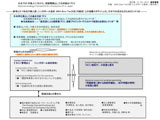 |
 |
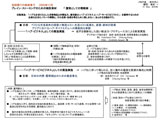 |
���}�h���ƃv���W�F�N�g�Â��������@�i�V���K�|�[�����{IR�����}�[��b���͂ɂ��@���V�i���I�@2012�N10���j
Discussion material�|1
for the Policy Proposal meeting�@in Oct 2012 |
���}�h���ƃv���W�F�N�g�Â��������@�iIR�����}�[��b�ւ̋��͗v�������@2012�N4���j
Discussion material�|2
for the Policy Proposal meeting�@in Oct 2012 |
�o�σn�u�c����@���� ���{�ł�IR�|�W�V�����@2008�N12��
Discussion material for economic hub development (including IR/casino projects) in 2008 |
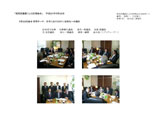 |
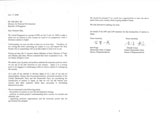 |
 |
�u���}�h�c���ɂ������v
2008�N5��22����@
�����e�[�}�F�@���{�ɂ�����J�W�m�@�����ւ̌���
Regular inter-party MP meeting:
May 22, 2008
Theme: Legislating Casinos in Japan |
���}�h�c����\�i�≮�A�Éꗼ�c���j���AIR�����}�[ ��b�ւ̐e���i���č쐬�Ƒ�b��n���|��؍_��j�@2008�N7��
Letter from MP Iwaya, LDP, and MP Koga, JDP, on behalf of the multi-party MPs to Minister Mah, responsible of IR (prepared and handed by Koji Suzuki) in July 2008 |
�o�σn�u�����i�̐헪�}
2009�N�`�iIR�v���W�F�N�g�܂ށj�@
Structure of Economic Hub Development 2009- (including IR/casino projects) |
|
 |
|
6. �u�o�σn�u��{�@�v����ʖ@�Ƃ���@�����̌���
�u�o�σn�u��{�@�E���āv���A�֘A������
�i�o�σn�u�����i��{�@����ʖ@�Ƃ���J�W�m�@�����j
��l�\��
�o�σn�u���ɐ�s�����i����n�悪�Γ������̑ΏۂƂ��ăJ�W�m�@�������s���Ă��邱�Ƃɂ��݁A�䂪���̃J�W�m�@���ɂ����ẮA�{�@�i�o�σn�u�����i��{�@�j����ʖ@�Ƃ��A���ɑO�q�̑�\�Z���A��\�����A��\�����A���\����A��O�\�l���ɂ̂��Ƃ�A�o�σn�u�����i�ɔ����C�O����̗D�ǂȓ����̏W��Ɨ��p�̂��߂̑ΏۂƂ��Ĉʒu�t���A�������_�̗����āA�{���̏��������Ƃ��Ė@�������u������̂Ƃ���B
�y�@�@�����z���ɏ��������b�@�z�i���@��74���j
�i���y��ʑ�b�A�o�ώY�Ƒ�b�A������b�A������b�A�O����b�A����b�A���t������b�A���j
(Legislation on Casinos under the Basic Hub Development Act)
Article 40: Considering that countries and regions which are advanced in hub development have legislated casinos as the target for investments from outside, the government shall consider casinos as targets for excellent overseas investments, and legislate on casinos as a subordinate act of the Basic Hub Development Act. Such legislation shall be based on the provisions in Articles 16, 17, 18, 29, and 34 of the Basic Hub Development Act. Upon obtaining public understanding, the Headquarters shall take action to legislate for casinos.
�i���{���{�|�V���K�|�[�����{�Ԃ̓ԍō��@�ւ̑n�݂ƁA�C�O���Ԏ��Ǝ҂��܂ޒ����c�j
��O�\�l���@
�{���́A���{�̃n�u�����i���m���ɉʂ������߂ɁA�A�W�A�ɂ�����n�u�����@�\��L����V���K�|�[�����{�ƁA���{���{�̊Ԃɂ����āA�헪�I�ȕ���𗧂Ă邽�߂̍ō��@�ւ̑n�݂��s�����̂Ƃ���B
�{���́A�A�W�A�ɂ�����n�u�����@�\��L�����i�n��̐��{���тɖ��Ԏ��Ǝ҂���̎Q��āA����I�Ȑ헪��c���s���A�䂪���̃n�u���̌����I�Ȑ��i�ɔ��f��������̂Ƃ���B
(Establishment of the Bilateral Supreme Policy Making Organization between Japanese and Singapore Governments, and Holding Regular Meetings of the Organizations including Overseas Private Sector Corporations.)
Article 34: The Headquarters shall establish the supreme policy making organization to consider strategic measures to ensure the development of hubs in Japan. The organization shall be a bilateral organization consisting of the Japanese government and the Singapore government which is already playing a hub function in Asia.
2) The Headquarters shall organize regular strategic meetings with the participation of the governments and private sector corporations in advanced regions with core hub functions (Singapore, Hong Kong, etc.), and shall reflect the discussion to the promotion of hub development in Japan.
|
 |
�y���ƃv���W�F�N�g�����|�R�z�@�@�@�@�@�@�@�@National Projects in Japan�|3
���{�̌o�ύĐ��ւ́\�\�\
�����㐻���A�T�[�r�X�Y�Ƃ̗Z���ւ̓���J���ƁA���������ނ̊J��
Special Zones in which �gnext-generation manufacturing and service industry�h will be fused.
Development of consumer products
�����I�G���^�[�e�C�������g�Y�Ǝx��
Development and support of general entertainment industries
|
| �m Manufacture and Entertainment�@ �n
Manufacturing Industry �~ Entertainment Industry
����N�̂��߂́A
���{�̓Ƒn�́E�Z�p�́E�J���́E�G���^�[�e�C�������g�͂��琬��A
1)�@�u�����㐻���^�Y�ƋZ�p�ƃT�[�r�X�Y�Ƃւ̗Z�����ɂ�鋒�_�J���i����j�̑n�݂ƁA
�@�@���������ތQ�̊J���v
2)�@�����I�G���^�[�e�C�����g�Y�Ƃ��x���A�J�����邱�Ƃ̂ł��鐧�x�v�ƁA
�@�@���_�J���i����j�̑n��
[30���~�s��n�o�A100���l�ٗp�n�o]�@��
To stimulate consumption, Japan�fs creativity, technology, innovation and entertainment capabilities will be mobilized to the following:
1) Establishment of bases (Special Zones) in which �gnext-generation manufacturing and industrial technology�h and the �gnext-generation service industry�h will be fused,
Establishment of development bases (Special Zones), and the Development of consumer products
2) Institutional design to be able to develop and support general entertainment industries and the Establishment of the bases (Special Zones)
Creating a 30 trillion yen market and 1 million employment opportunities
|
 |
|
�u������Y�ƋZ�p�ɂ�閯�������ތQ�̊J���v
���{�����ӂƂ��� �����㐻���E�T�[�r�X�Y�Ƃɂ����āA
���������ނւ̊J���Ə���g��A�����g��ւ̓˔j���i�J����j�Â����ڕW�Ƃ���B
The aim is to create a breakthrough (development site) to develop consumer products in the
next-generation manufacturing and service industries in which Japan is strong, and to
expand consumption and domestic demand.
�G�R���W�[�E�f�B�x���b�v�����g
������A��փG�l���M�[�^�N���[���G�l���M�[�@�@���C�t�T�C�G���X �@
�o�C�I�@�@�q���[�}���T�C�G���X�@�@
�mMD�W�������n EV�^PHV�����ԁ@�@���������̉Ɓ@�@�X�}�[�g�V�e�B�@�@�Z��ށ@�@
�X�|�[�c�E���W���[���ށ@�@�t�@�b�V�����E�ߗ����ށ@�@�Ɠd�E�I�t�B�X����
Ecological Development
Environmentally approached alternative energy/clean energy Life Science
Biological industry Human Science
<MD Genre> EV/PHV vehicles Self-supplying houses Smart City
Housing materials Sports & Leisure products Fashion and apparel
�h��&���C�t�E�f�B�x���b�v�����g
�h�ЁE���ЁA���E���C�t���C���Z�p�A�G�l���M�[�Z�p�A�q���[�}���E�F�A�Z�p�ɂ���đn�������A
[�X�i���`�A�_�R���A�s�s�j�E�C���t���E��ʁE�Z���E����] ����
�mMD�W�������n �h�ЁE�Z�L�����e�B�@IT�@��ÁE���@���Z�@����@�H�i�@���N�@��
Disaster Prevention and Lifestyle Development
Merchandise for towns (fishing ports, farming villages and cities), infrastructure, transportation,
housing and living developed by disaster prevention and reduction technology, environmental
technology and essential utility technologies and humanware technology.
<MD Genre> Disaster prevention, security, IT, medical and nursing services, housing,
Education, foods, health, and the environment
���Y�A�_�юY�Ƃւ̃n�C�e�N���ފJ���^�f�B�x���b�v�����g
��^�@�B�E���J�g���j�N�X
�@�@�@�B�i���A�A���A�H�쓙�j�@���J�g���j�N�X�@�I�[�g���[�V����
�y���Y�ƁE���Y���H�ҁz
�@�@�n�C�e�N�Z�p�ɂ�鋙�Ɛ��Y�V�X�e���A�C�m���A���Y�����A���ƋZ�p�A���D�^�q�@���ւ́@
�@�@�������E�ȃG�l���E���S���ւ̏��ފJ��
�@�@�����I�ȋ���A���@�ɂ��n�C�e�N���ƋZ�p���p�̏��ފJ��
�@�@�T�X�e�B�i�u�����[�X���Ƃ̂��߂̏��ފJ���@�@��
High-tech product development in the fields of fisheries and agriculture & forestry
Large machines and mechatronics
Machinery (environment, transportation, machine tools), mechatronics, automation
�yFisheries/Seafood Processing�z
Developing more efficient, energy saving products with higher safety for high-tech fishing
production system, marine environment, marine resources, fishing techniques, and fishing
boat operations
Developing efficient fishing equipment, and products using high-tech fishing technologies
Developing products for sustainable fishing use
���}�e���A���E�f�B�x���b�v�����g
�V�f�ށ@���@�\�ށ@�V�G�l���M�[�@���`���@�t�@�C���P�~�J��
�mMD�W�������n ���T�C�N���A�ȃG�l�@�@�t�@�b�V�����E�ߗ��@�@�Z��֘A�@�@�I�t�B�X�֘A�@�@��������
Environmental Material Development
New materials, high functional products, new energy, superconductivity, fine chemicals
<MD Genre> Recycling, energy saving, fashion and apparel, housing-related and office related materials, products for living.
������̃T�C�o�[�E�f�B�x���b�v�����g
���d���̎�����m���E�s�s�E����] ����
---- IT�@�@�T�C�o�[�E�G���N�g���j�N�X�@�@�}�C�N���G���N�g���j�N�X�@���Z�p
�o�[�`�������A���e�B�E�V�X�e���@�@�j���[���E�R���s���[�^�[�@�@�n�C�p�[���f�B�A
�mMD�W�������n �ԍڋ@��@�@�X�}�[�g�V�e�B �Ɠd�@�ʐM�@��@�I�t�B�X�@��@�Z���@ �Q�[���@��
Environmentally approached Cyber Development
Products for next generation �gEnvironment, City and Lifestyle�h with an environmental emphasis
-- IT, cyber electronics, micro electronics, optic technology, virtual reality systems,
neurocomputers, hyper media
<MD Genre> In-vehicle devices, Smart City, household electric appliances,
communications, office equipment, houses, game machines
|
|
|
|